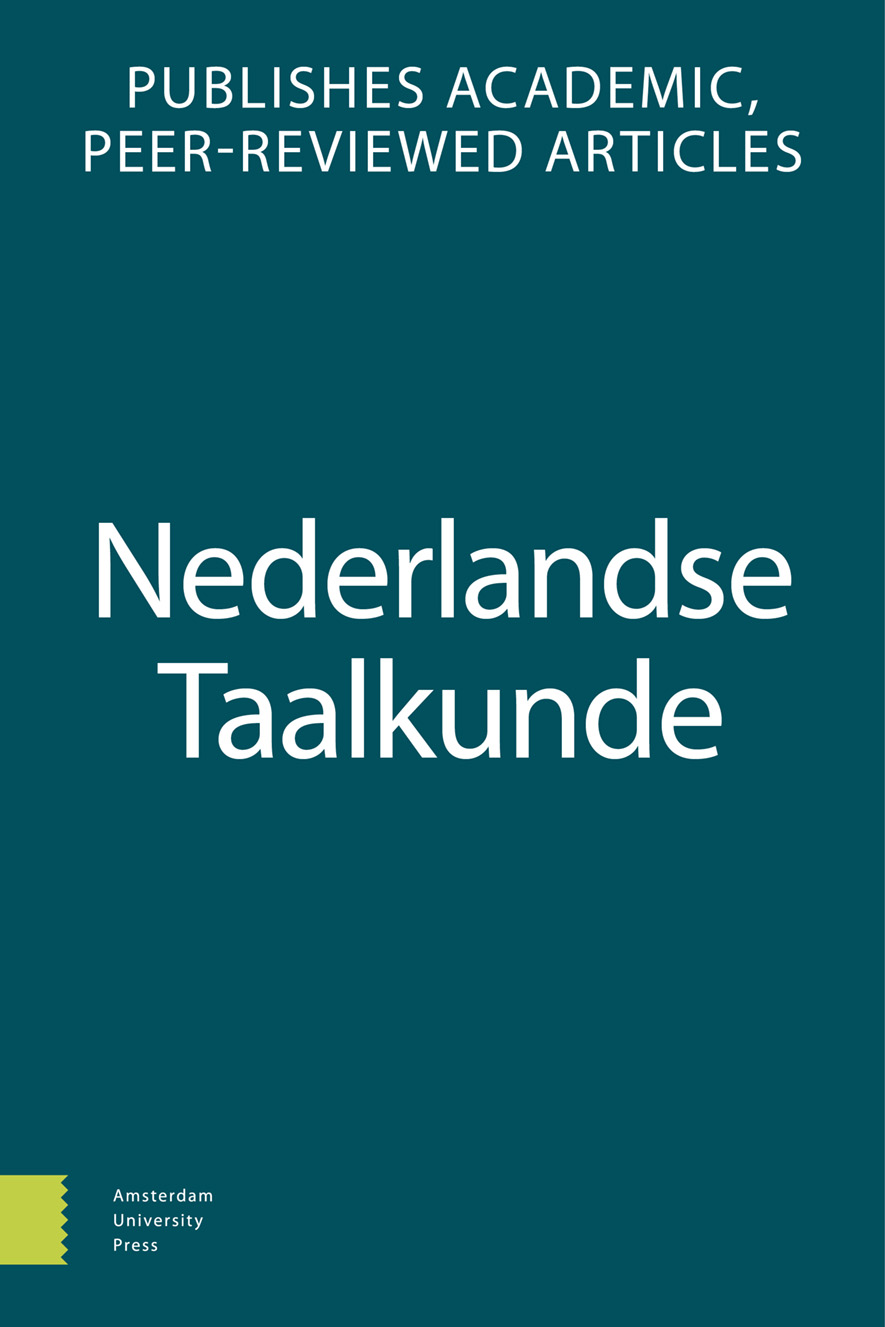-
oa Volgordevariatie in groepen met receptief krijgen + voltooid deelwoord in de Nederlands Nederlandse krantentaal1
Een synchroon en diachroon onderzoek
- Amsterdam University Press
- Source: Nederlandse Taalkunde, Volume 28, Issue 1, Apr 2023, p. 1 - 35
-
- 01 Apr 2023
- Previous Article
- Table of Contents
- Next Article
Abstract
This article presents the results from a corpus-based investigation of the word order variation observed in verb clusters with ‘receptive’ or ‘semipassive’ krijgen ‘to get’ + a past participle, i.e. between the order in dat hij het boek overhandigd kreeg and the one in dat hij het boek kreeg overhandigd ‘that he was handed (literally: got handed) the book’. In contrast to the same word order variation in clusters with the much more frequent (and much older) auxiliaries hebben ‘to have’, zijn ‘to be’ and worden ‘to be/ become’, which has been the subject of numerous existing studies, including multifactorial corpus-based work by De Sutter (2005, 2007, etc.) and Bloem, Versloot & Weerman (2014, 2017), the variation in krijgen-clusters has never been investigated before, barring a preliminary study by Colleman & Rens (2016). A mixed-effects logistic regression analysis of data culled from a diachronic corpus of Dutch newspaper texts shows (i) that the variation in krijgen-clusters, though it is fairly new, is driven by largely the same language-internal factors as the variation in clusters with hebben etc., and (ii) that, in the course of the 20th century, there has been a significant increase in the relative frequency of the ‘auxiliarised’ krijgen + participle order.


